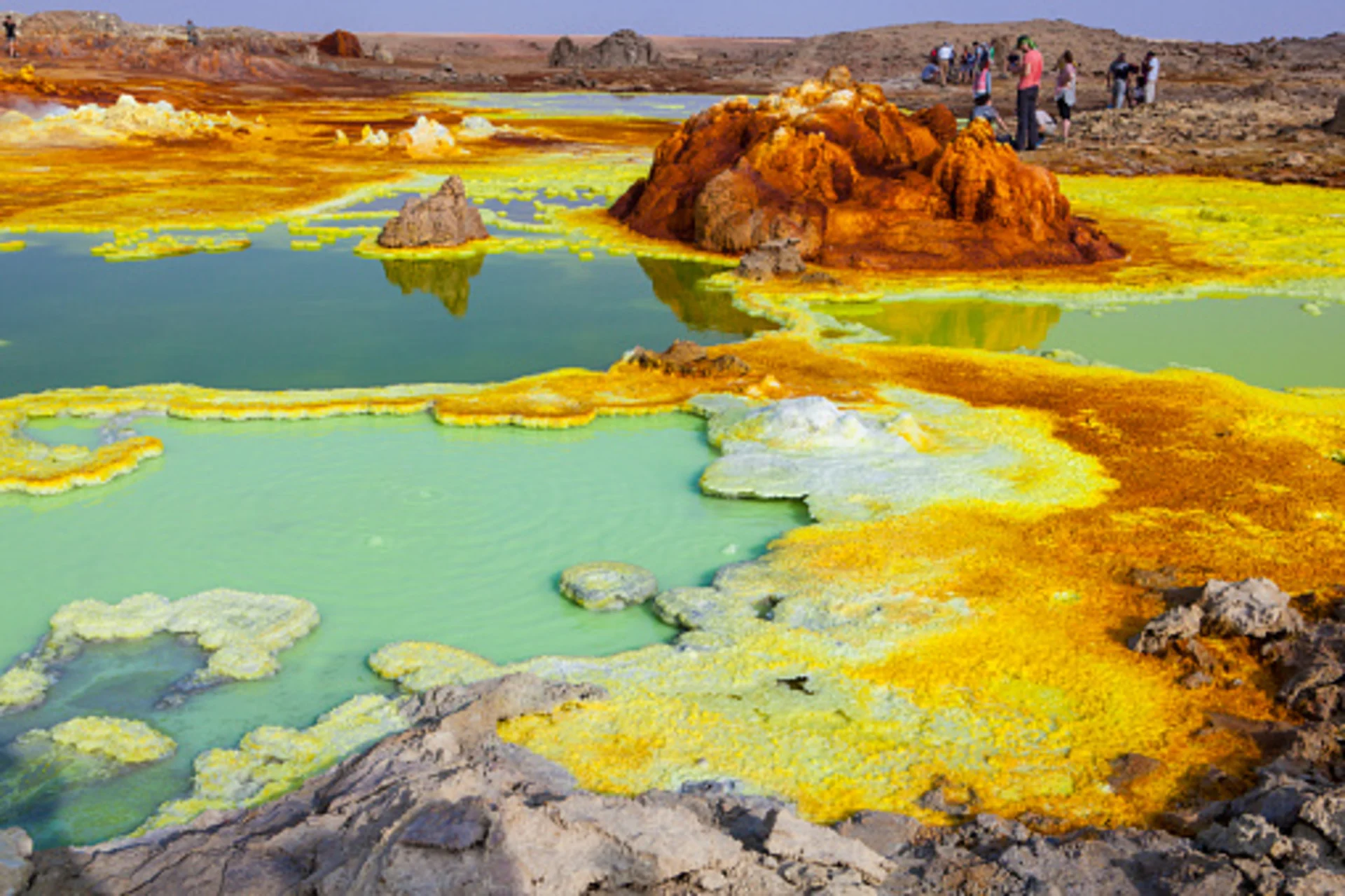
Stunning but deadly, see the place on Earth where nothing survives
Life on Earth shows up in some surprising places. No matter how extreme the environment, some intrepid lifeform—often a microorganism—makes a home there. Species that live near hydrothermal vents in the ocean are an excellent example of these so-called 'extremophiles,' who thrive under the pressure of 2500 metres of water overhead in temperatures up to 80ºC.
But even they don't care for the visually stunning but intensely hostile environment of Dallol.
Located in northeastern Ethiopia, the Danakil (or Afar) Depression sits at the intersection of three tectonic plates where diverging plates are stretching Earth at its seams, so to speak. One of the hottest places on the planet, the Danakil Depression is already well below sea level—by about 100 metres—and still sinking. While it will ultimately be filled by the sea to form a new body of water, in the meantime, the depression is filled with intense hydrothermal action.
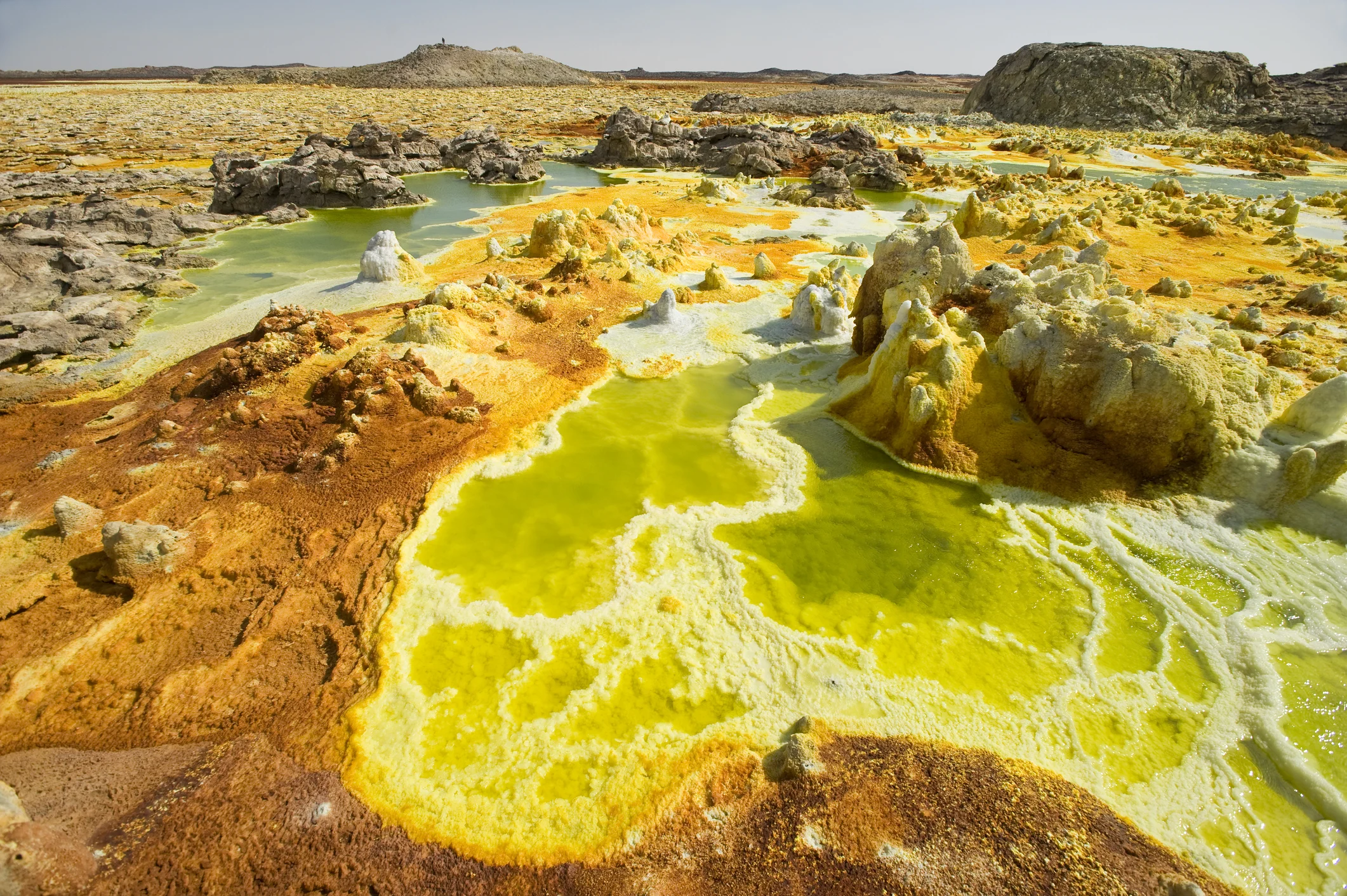
Inside the explosion crater of Dallol volcano, Danakil Depression, Ethiopia Image: Getty
Even in winter, daily temperatures routinely exceed 45ºC above pools of boiling water. And not just any water -- this stuff is hypersaline and hyperacidic. In some cases, pH values even dip into the negative. By comparison, the pH of battery acid hovers just below zero.
While there are lifeforms on Earth that love all of those things by themselves -- intensely salty water, very hot water, and super acidic water -- it seems there isn't one that loves all three together.
"We have verified that there's no microbial life in these salty, hot and hyperacid pools or in the adjacent magnesium-rich brine lakes," lead researcher Purificación López Garcia said in a release to science news agency SINC in 2019.
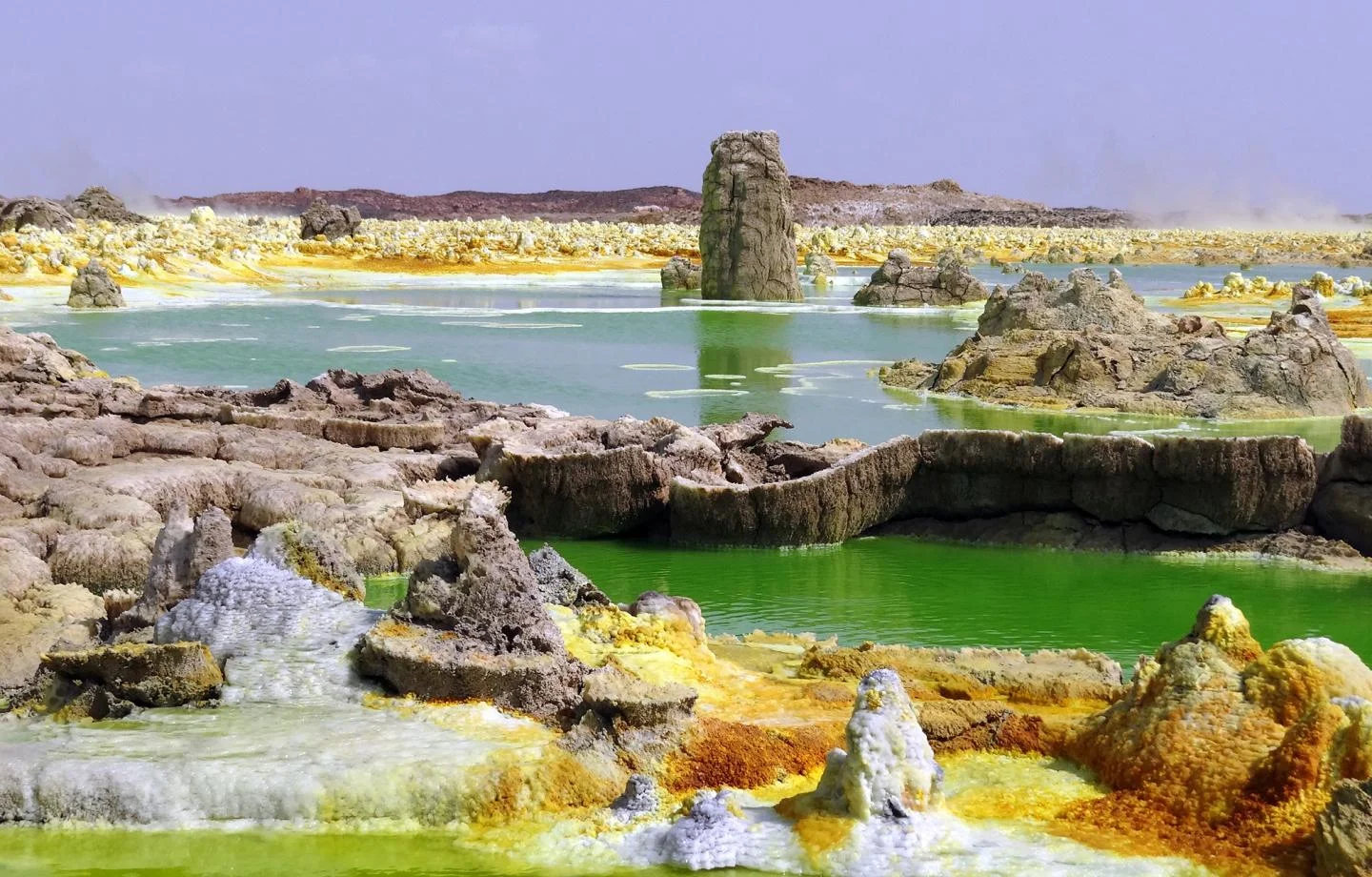
Hyperacid, hypersaline and hot ponds in the geothermal field of Dallol (Ethiopia). Despite the presence of liquid water, this multi-extreme system does not allow the development of life, according to a new study. The yellow-greenish colour is due to the presence of reduced iron. Image courtesy Puri López-García.
In 2019, López Garcia and her team published a study with their findings in Nature Ecology and Evolution revealing that, while they found a lot of salt-loving microorganisms in the desert and canyons around the site, the pools themselves, along with the region's so-called Black and Yellow lakes, were dead zones.
These findings are not only interesting in terms of what it means for life -- or lack thereof -- on Earth but what it means for our exploration of other planets.
"Our study presents evidence that there are places on the Earth's surface, such as the Dallol pools, which are sterile even though they contain liquid water," says López Garcia. That means that, just because we find liquid water on another planet, it doesn't mean we'll find life.
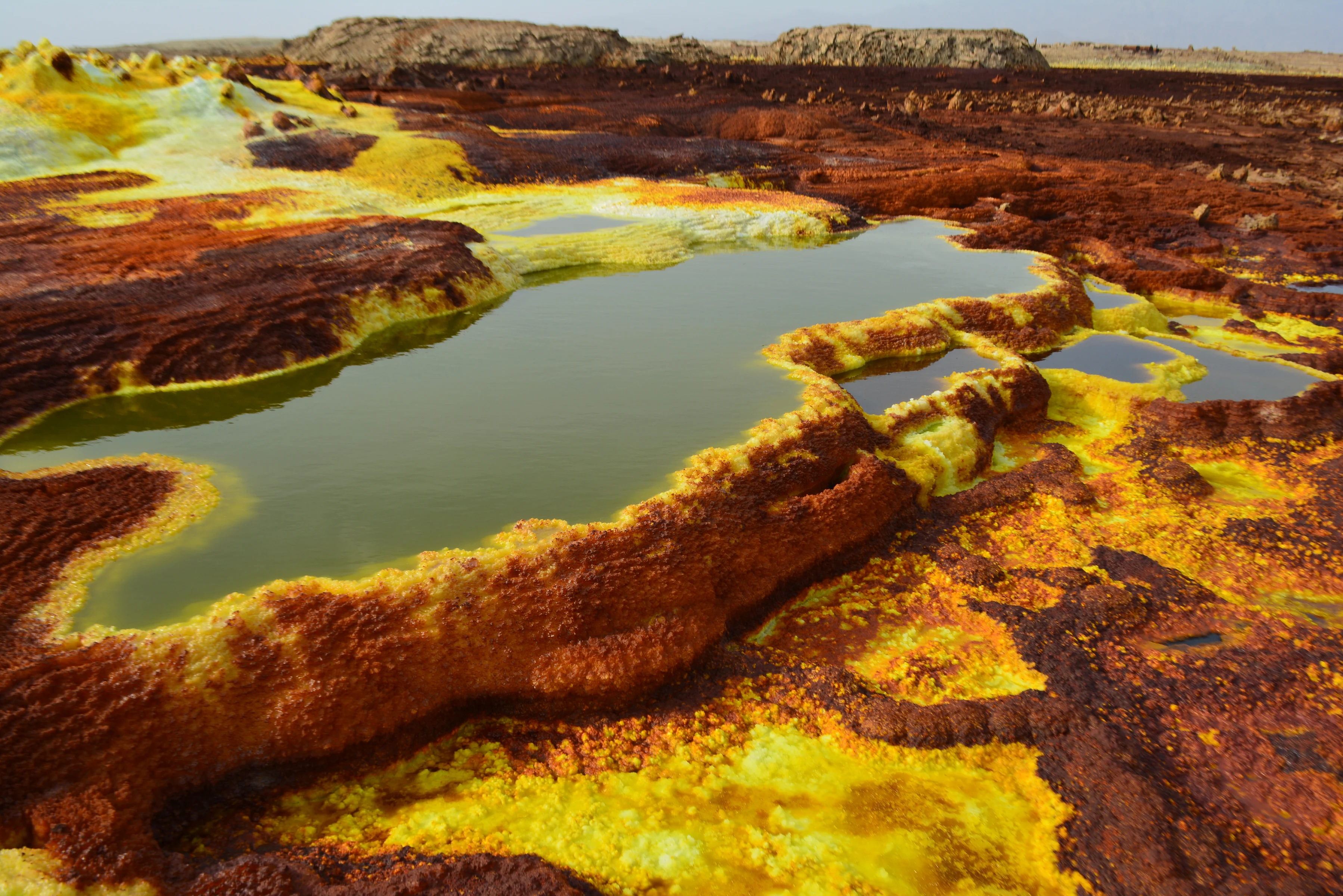
Small acid lakes in the Danakil Depression. Image: Getty
The team believes it's the three factors combined -- the high salinity, high acidity, and high temperature -- along with a large amount of a particular type of magnesium salts in the adjacent lakes that make the region so hostile to life.
"We would not expect to find life forms in similar environments on other planets, at least not based on a biochemistry similar to terrestrial biochemistry," says López Garcia.
A conflicting study published in May 2019 reached the opposite conclusion; that there were, indeed, microorganisms present in these hostile waters. López Garcia says her team's work was based on "many more samples" than the previous work and had a particular focus on preventing contamination -- something that's a distinct concern given the region's attractiveness to tourists.
Either way, the pools are uniquely positioned to help scientists understand the limits of life here on Earth and beyond.
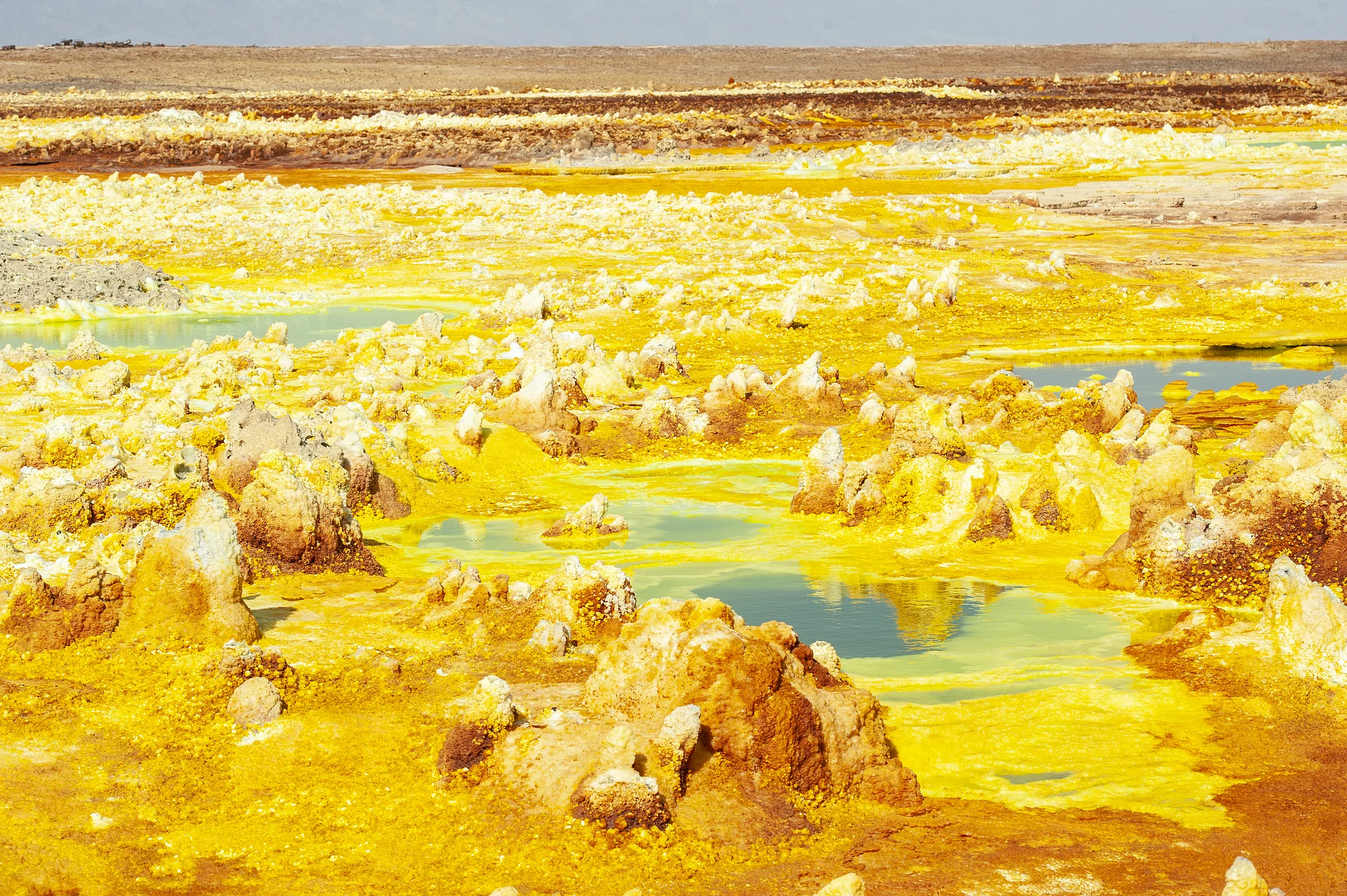
The volcanic explosion crater of Dallol in the Danakil Depression in Nothern Ethiopia. The Dallol crater was formed during a phreatic eruption in 1926. This crater is known as the lowest subaerial vulcanic vents in the world. The surreal colours are caused by green acid ponds and iron oxides and sulphur. Image: Getty
Sources: Nature | EurekAlert | SINC
--
Editor's note: This article was originally published by The Weather Network in 2019.










